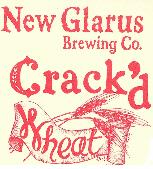 Saturday was Autumn Brew Review. At least half a million people turned out at parking lot of the historic Grain Belt Brewery in Minneapolis. Okay, so maybe there weren’t quite that many, but there were a bunch of people there. The sold out annual event was very well attended with beer lovers given the opportunity to taste the wares of 57 different breweries both local and national. Construction in the field approaching the river made the festival confines feel much more confined than last year and hot muggy weather made the compact crowds a bit hard to take by the end, at least for me. However, food lines never reached the epic lengths that they did last year, which was a definite improvement. I think the line at the Surly Brewing booth was the longest that I saw anywhere all day.
Saturday was Autumn Brew Review. At least half a million people turned out at parking lot of the historic Grain Belt Brewery in Minneapolis. Okay, so maybe there weren’t quite that many, but there were a bunch of people there. The sold out annual event was very well attended with beer lovers given the opportunity to taste the wares of 57 different breweries both local and national. Construction in the field approaching the river made the festival confines feel much more confined than last year and hot muggy weather made the compact crowds a bit hard to take by the end, at least for me. However, food lines never reached the epic lengths that they did last year, which was a definite improvement. I think the line at the Surly Brewing booth was the longest that I saw anywhere all day.
It was a good day for sour beers in my view and so-so day for pale ale and IPA. The first three of my top five beers were sour beers, with funky wild brews on offering from a number of brewers including Surly, Herkimer, Ommegang, Two Brothers, Victory, Great Waters, and others. As for the huge numbers of pale ales and IPAs on offer, nothing really stood out. With so many of these out there, brewers have to do something really special to rise above the crowd. In this category I found myself writing over and over again, “yet another hoppy IPA.” I think I’m just kind of over it.
Because of a tie for the top beer, my top five picks are really my top six picks. Starting at the bottom and working up, my number five beer was Summit German Style Kölsch. This is just a fantastic beer. Light and delicate, bready and subtly bitter, it provided me a blissful retreat at the end of the day when my palate had been smashed by the excesses of big, bitter, and barrel-aged. Remarkably its flavors still held their own. My number four was Odin Baltic Porter from Town Hall. This was a wonderfully rich and chocolaty porter with luscious caramel undertones and assertive herbal/grassy hop flavors and bitterness. Continuing up the list, my number three pick was Chestnut Hill from Lift Bridge Brewery. A big Nut Brown Ale, this beer had a creamy nutty and caramel malt profile nicely balanced by spicy/herbal hop bitterness and flavor. Rich but drinkable, Chestnut Hill would make a nice session beer even at 7% ABV. In the number two slot I put Thermo Refur from Furthermore Beer. This was an aged version of the beer they released last winter. The further aging has done it some good. This beer has developed a wonderful wild yeast funk; not sour, but redolent of earth, leather and barnyard. It is bone dry, but not lacking in body. I even think I tasted the beets.
My two top picks for this year were Rouge from Brewery Ommegang and Gose from the Herkimer Brewpub. Rouge is a Grand Cru style Flemish red ale that is a collaboration between Brewery Ommegang and Brouwerij Bockor in Belgium. It was spontaneously fermented and aged for 18 months in oak tuns. The result is a beautifully sour and barnyard beer with loads of cherry and berry flavors. While the acidity is strong, there remains a balancing malt sweetness that keeps it from being over the top. Beautiful. The real surprise of the festival for me was the Gose from Herkimer Brewpub. Gose is a rare North German ale style from the city of Leipzig, one of the few surviving representatives of the “white” beers that were once brewed all over northern Europe. A sour wheat beer flavored with coriander and sea salt, Gose is unique. Only one or two breweries in Leipzig still produce it and I know of only one that is available in the US. The Herkimer example was a nice one. Light and refreshing, tart but not overly sour, with a roundness of body and subtle saltiness from the addition of sea salt, I went back for this one three times during the day.
Other beers that seem worthy of mention but didn’t make my top five list include New Belgium Hoptober, Schell’s Roggenbier, Little Sumpin’ Sumpin’ and Little Sumpin’ Sumpin’ Extra from Lagunitas (the only pale ales that managed to stand out from the crowd), Surly Brett, Avery Collaboration Tripel, and Vine Park English Premium Bitter. All in all it was a great event with a lot of great beers to sample. Can’t wait for Winterfest.

 I recently heard a
I recently heard a 



